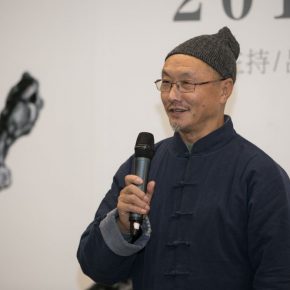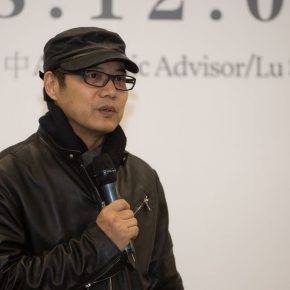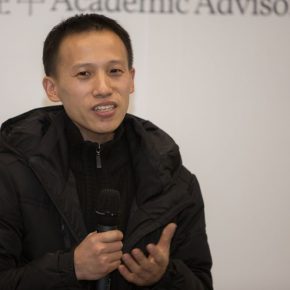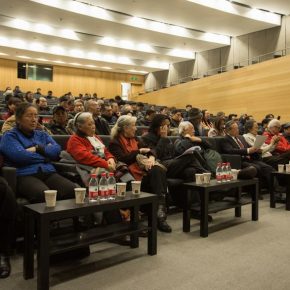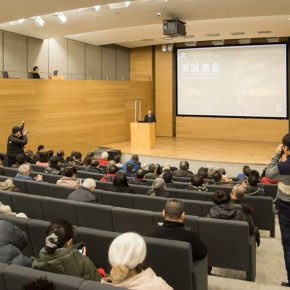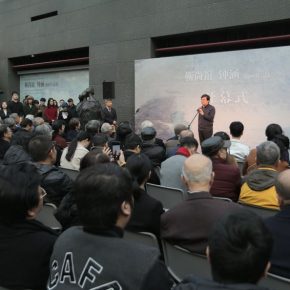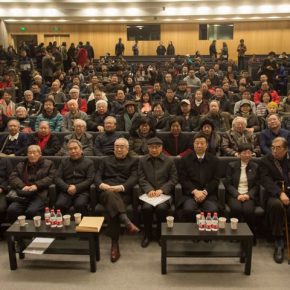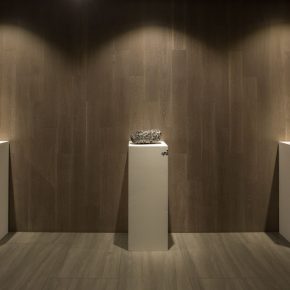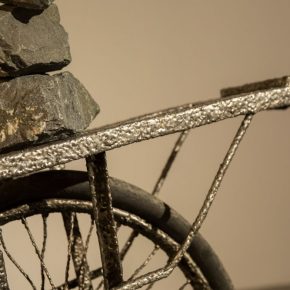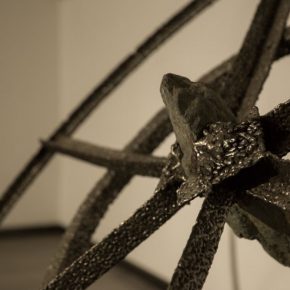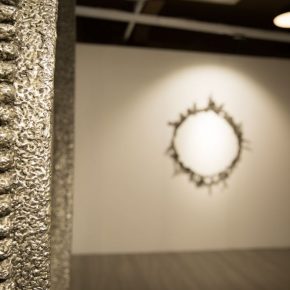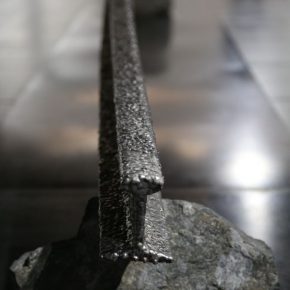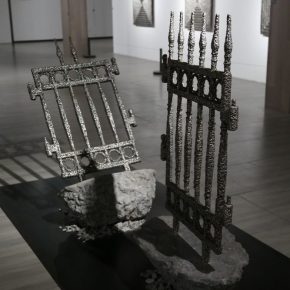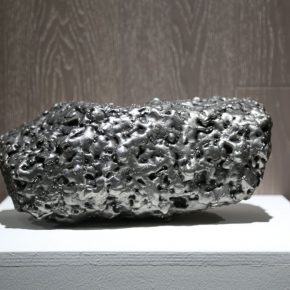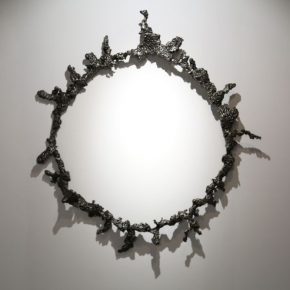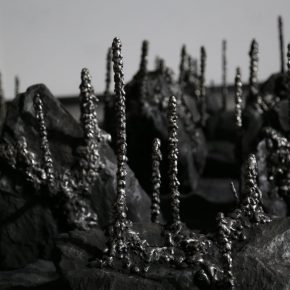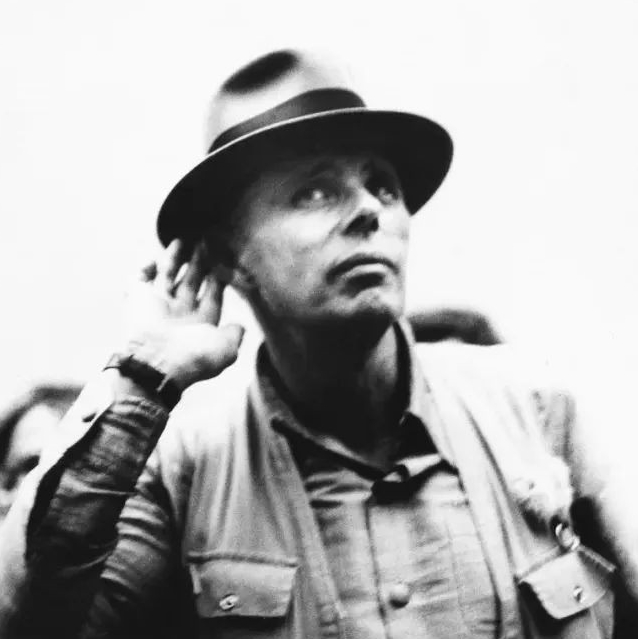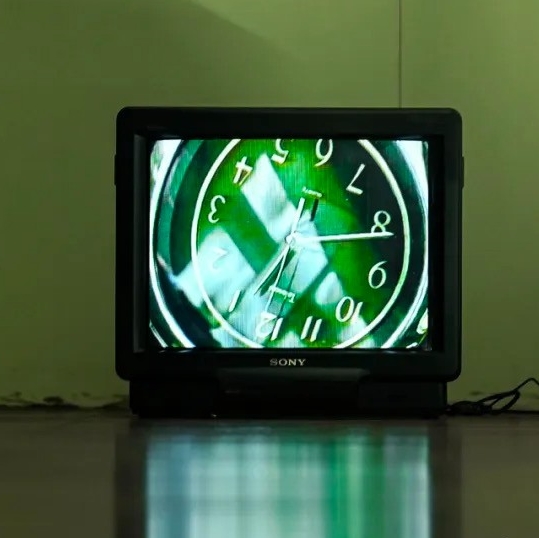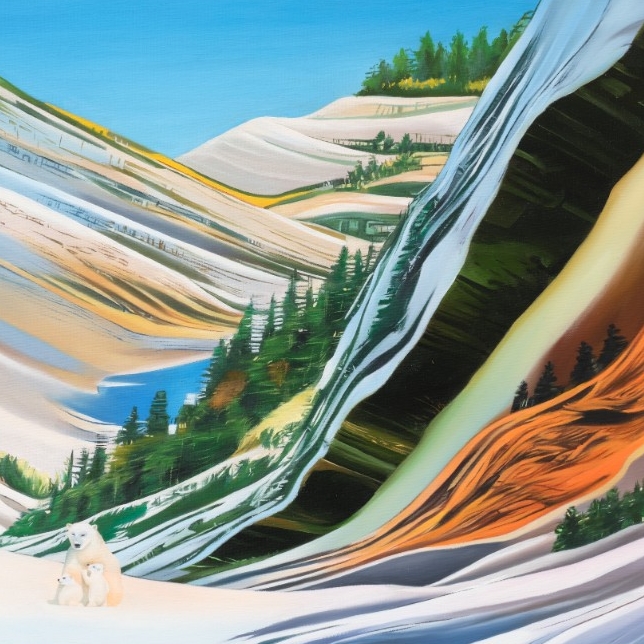
At 3:30 PM on December 3, 2018, Chen Mingqiang, a young teacher from the School of Experimental Art at the Central Academy of Fine Arts(abbr. CAFA), presented his solo exhibition entitled “Gold Water” at the West Hall, History Museum of CAFA. The exhibition was hosted by the China Central Academy of Fine Arts and co-organized by the School of Experimental Art at CAFA, Professor Lyu (Lu) Shengzhong, former Dean for the School of Experimental Art, served as its academic chair and Associate Professor of CAFA Liu Libin served as its curator. Chen Mingqiang was born in Jianyang, Fujian Province in 1983 and he graduated from the Department of Experimental Art in 2008 with a Bachelor’s degree and the School of Experimental Art with a Master’s degree in 2013. After that he taught at the School of Experimental Art. The exhibition showcases his artistic exploration and creations over the past five years.
Professor Lyu (Lu) Shengzhong, Former Dean for the School of Experimental Art at CAFA, Professor Wang Chunchen, Deputy Director of the CAFA Art Museum, Curator and Associate Professor Liu Libin, Professor Zhang Guolong from the School of Experimental Art and Associate Professor and Deputy Dean for the School of Experimental Art Wang Yuyang, Deputy Director of Academic Affairs Office Lyu (Lu) Ming, Executive Editor-in-Chief of CAFA ART INFO Zhang Yanzi, Ge Yujun, the Party Secretary of CAFA Postgraduate School and Director of the Teaching Department as well as other guests and journalists attended the opening ceremony. The opening ceremony was hosted by Shi Yuanxin, a teacher from the School of Experimental Art.
Chen Mingqiang lives in the urban-rural junction outside the Sixth Ring Road and he often picks up ready-made products from the waste recycling station and brings back items that have impressed him to his studio such as iron fences, pots and unicycles and iron plates with textures. Curator Liu Libin believes that Chen Mingqiang’s choice of “ready-made” products have both a visual measure and consideration on social factors. “Choice” is not just a rejection of his previous methods of “modeling” creation, but the initiative here contains a form of negativity; it is also the affirmation of the visual ability of “what I have found is mine” and the negativity here is another kind of potential initiative. Like a city with walls made with metal and a moat of boiling water, “being solid” is an expectation and the result might not be ideal. The stainless steel solder joints are welded on the metal, which instantly produce a colorful spark, which turns into boiled gold water, which eventually solidifies into a tough and cold “golden bough.” Chen Mingqiang has built this “city” with rigour and the ultimate sensory experience he presents is a “destructive feeling with the dark clouds crushed on the city”: with a beautified surface and weathered core.
The British anthropologist James George Fraser talks about an ancient custom in The Golden Bough: the priest of a sanctuary guards a divine tree day and night, and it is regarded as the “King of the Wood,” he was a priest and a murderer. But if there is a runaway slave, who was allowed to break off a bough from the divine tree, success in the attempt entitled him to fight the priest in single combat, if if he slew him he reigned in his stead with the title of King of the Wood. If you fold a golden bough, you will be called a runaway slave. Professor Lyu (Lu) Shengzhong believes that Chen Mingqiang has inspiration from The Golden Bough and tried to become a free creator in the realm of the empty heart. Even if he had the entire forest, he would never enslave anyone, since he would become his own master and also his own slave.
Professor Lyu (Lu) Shengzhong, the academic chair of this exhibition, attended the opening ceremony and gave the first speech. He mentioned that he noticed that Chen Mingqiang kept working at CAFA almost every day, so he wondered how Chen Mingqiang had time to create. Young artists, when they started to work, whether they are active or passive, they must invest time in teaching and administrative work, and their artistic pursuits will be greatly suppressed. Professor Lyu (Lu) Shengzhong said frankly: “Observing Chen Mingqiang’s exhibition, I want to shout: it’s true art! As he is not a celebrity artist who might catch up with the speed of the exhibition. It is true that he cannot hear the hammer of the art market even if there is no exhibition, he has been devoted to art with his body and soul.” Professor Lyu (Lu) Shengzhong believed that on the one hand Chen Mingqiang was sticking to himself, on the other hand he was presenting his experience about contemporary art. Therefore, in the view of Professor Lyu Shengzhong, this was an exhibition with profound inquiry.
In his speech, Professor Wang Chunchen started from his own experience and said: “From his graduation work to his recent creations, Chen Mingqiang’s works develop into another temperament.” He believed that many of Chen’s previous artworks were visual expressions, and now his artistic creations were endowed with a unified inner look. In the view of Professor Wang Chunchen, Chen Mingqiang’s works accumulated over the years reflected his artistic language and spiritual state. Meanwhile, he believed that Chen Mingqiang has excelled in the language experiments in metal art, and has already stepped out of the scope of the Academy of Fine Arts. This experiment could be infinitely magnified in the future, and there would be many possibilities. In this quickly developing era, young artists with strong positions like Chen Mingqiang have made an outstanding debut.
Professor Zhang Guolong was a witness to Chen Mingqiang’s artistic journey. He agreed with Professor Lyu (Lu) Shengzhong’s comment on Chen Mingqiang that “there is unbelievable energy in such a small figure.” He believed that the exploration and professional study of an artistic language can be divided into three stages: trans-category, outstanding and role transformation. On all these three points, Chen Mingqiang did a great job. “Chen Mingqiang uses the method of electric welding and iron ore to ‘touch the stone and turn it into gold’, and his artistic practice will continue with the will of ‘grinding a pestle into a needle’, and also the contextualization of his artistic concept of ‘being impregnable.’ He seems to be an ascetic, opens up new ideas in the tough trek and strengthen his mind.” At the same time, Professor Zhang Guolong believed that the teaching and studying compensated for each other although the exhibition space was small, it is a landmark exhibition for Chen Mingqiang himself. The expressions in Chen Mingqiang’s works are very firm and clear, and there will be a long way for him to explore in the future.
Curator Liu Libin has paid attention to Chen’s artistic creation since Chen’s undergraduate study. He believed that from Chen Mingqiang’s earliest work which left a great impression on the audience, which was entitled “Guo Ting No. 1 Gun Camera” (2007), and later “Love Armour” (2013), he can be seen as a young artist who has conducted experiments in all directions. During the five years after his graduation, Chen Mingqiang welded works every day and these works were brought together for this exhibition. Liu Libin believed that Chen Mingqiang’s works can be described as “meticulous.” He created his own personal daily state and used a lot of fragmented time to create for the exhibition. The language and method of creation are not only like the texturing method in Chinese landscape painting, but also like the stippling in Western art. When the language accumulates to a certain extent, it is “deformed” and this includes not just the deformation of the objects, but also the deformation of his own state.
At the end of the opening ceremony, artist Chen Mingqiang expressed sincere gratitude to the Central Academy of Fine Arts, the School of Experimental Art, and his own teachers and distinguished guests. The exhibition will remain on view till December 12, 2018.
Text by Yang Zhonghui, translated and edited by Sue/CAFA ART INFO
Photo by Hu Sichen/CAFA ART INFO (Photo Courtesy of the Artist)


